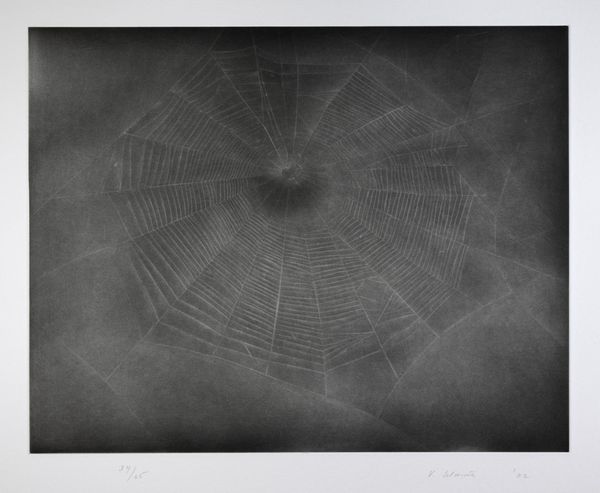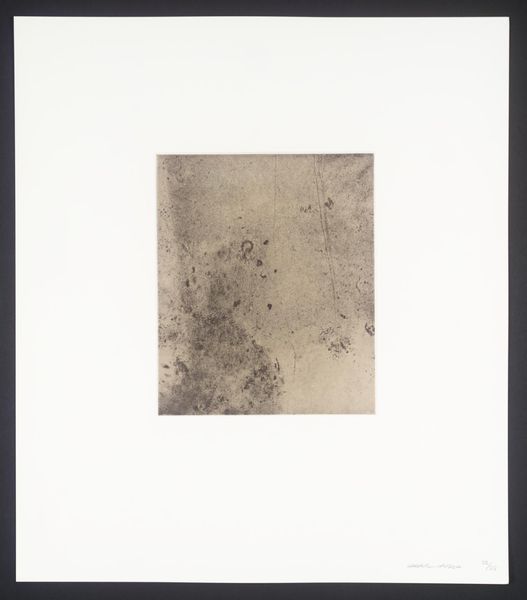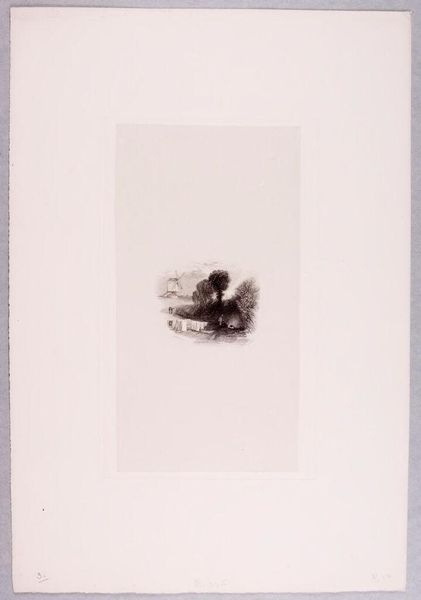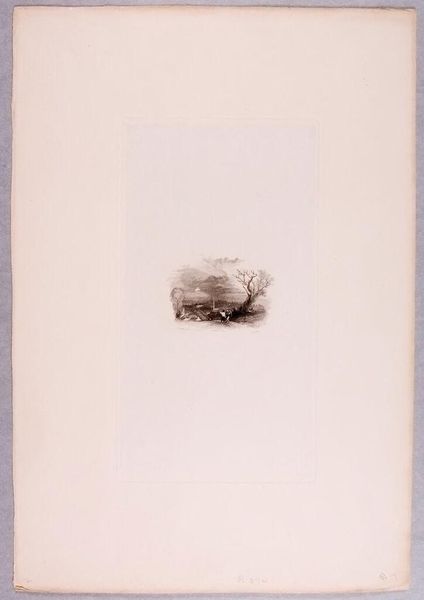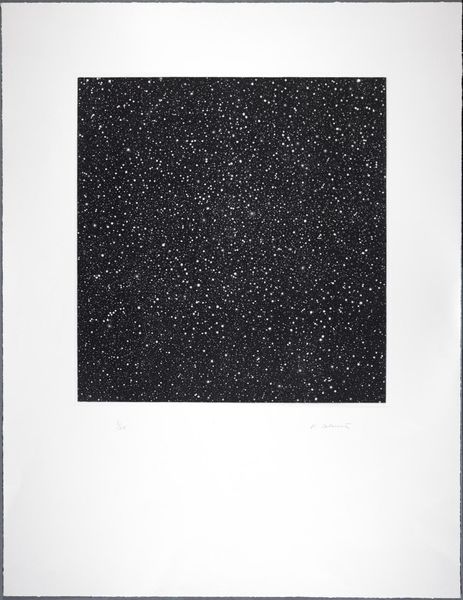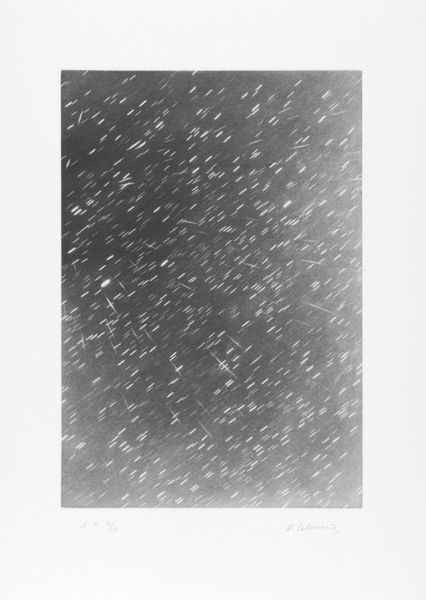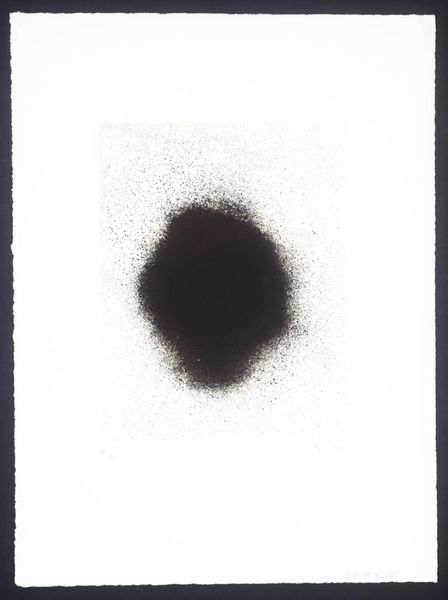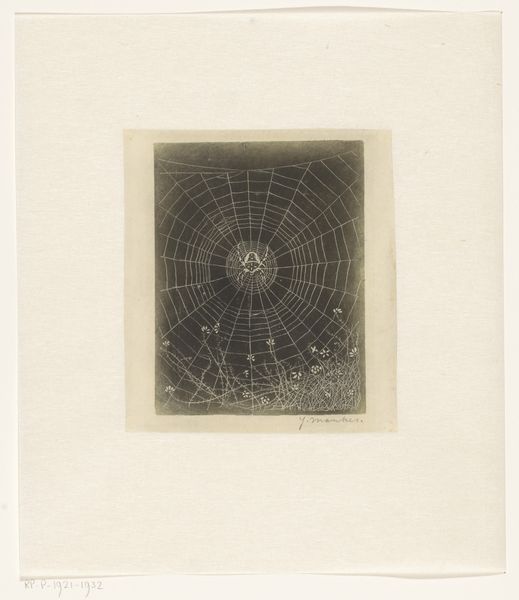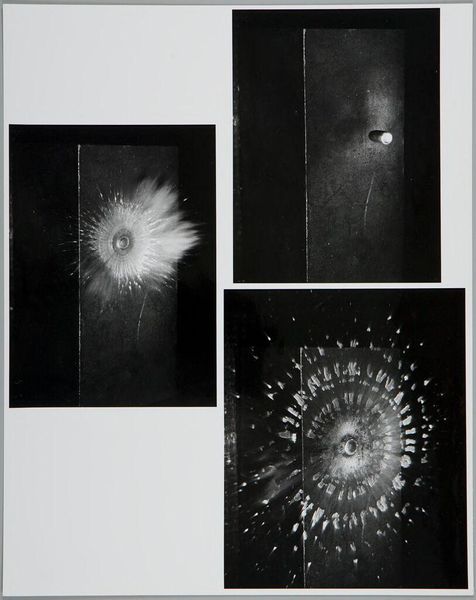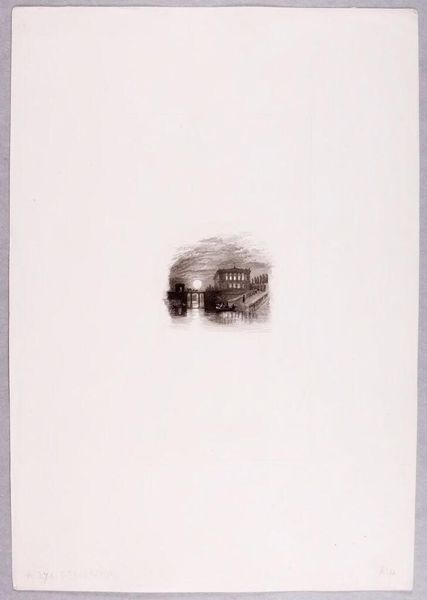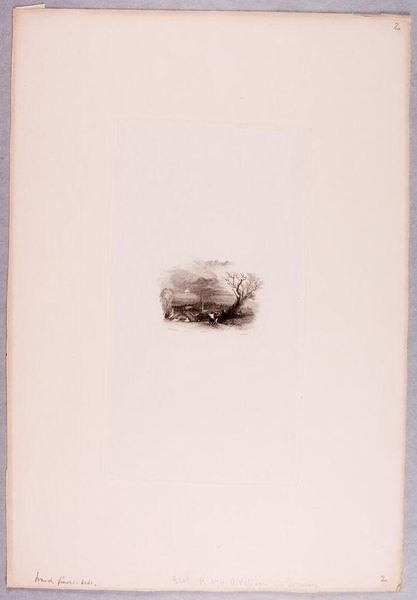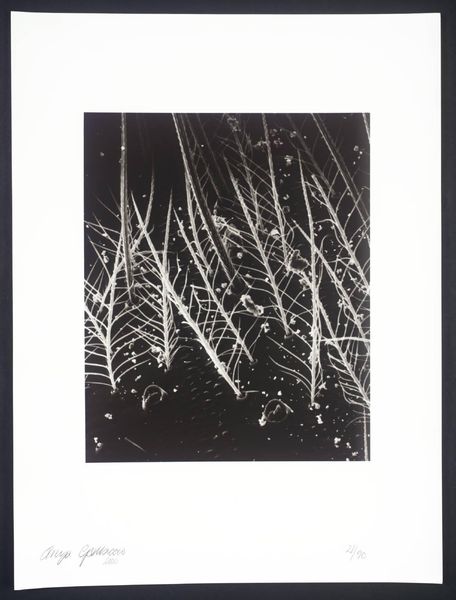
Dimensions: image: 177 x 194 mm
Copyright: © Vija Celmins | CC-BY-NC-ND 4.0 DEED, Photo: Tate
Curator: Looking at Vija Celmins' "Untitled (Web 2)" I am immediately struck by how fragile yet menacing it appears. Editor: This print certainly plays with perception. Celmins, born in 1938, often focused on rendering commonplace objects and natural phenomena with meticulous detail. Her choices of subject matter often reflect the anxieties of the Cold War era. Curator: The spiderweb becomes a symbol then, of entrapment, of unseen threats, or perhaps even the complex web of socio-political power structures. Editor: Exactly, and consider Celmins' technique. Her dedication to photorealistic depiction transforms the mundane into something worthy of intense contemplation, prompting viewers to question their own relationship with the world around them. Curator: It’s fascinating how she elevates such an overlooked subject to this level of critical engagement. I am intrigued. Editor: As am I. Thank you for offering that insightful perspective.
Comments
tate 7 months ago
⋮
http://www.tate.org.uk/art/artworks/celmins-untitled-web-2-ar00477
Join the conversation
Join millions of artists and users on Artera today and experience the ultimate creative platform.
tate 7 months ago
⋮
Untitled (Web 2) is a mezzotint print of a spider’s web on Hahnemühle Copperplate paper. It was printed and published by Lapis Press, Los Angeles, in an edition of fifty plus ten artist’s proofs. The copy held by ARTIST ROOMS is edition number 7/50, inscribed at the bottom left corner of the print, and signed by the artist at the bottom right corner in pencil. The subject matter of this print – as is the case with the majority of Vija Celmins’s drawings, prints and paintings – is based on a photograph of a spider’s web rather than the direct observation of nature. The art historian Susan Lambert has outlined the basic tenets of mezzotint as a technique, one which Celmins has utilised in numerous prints, writing:
